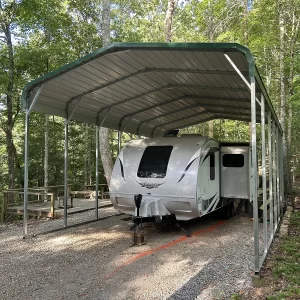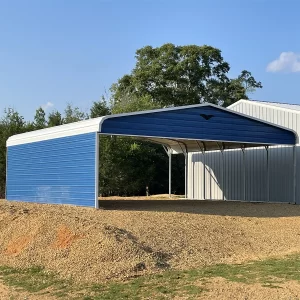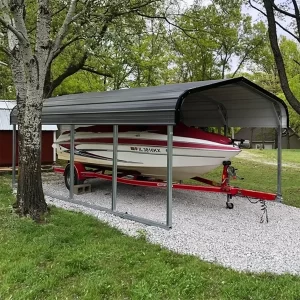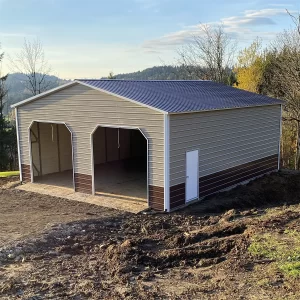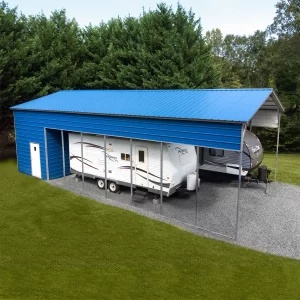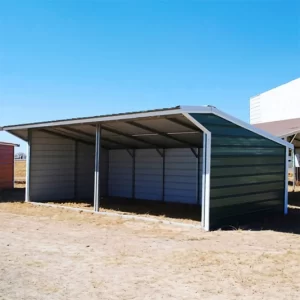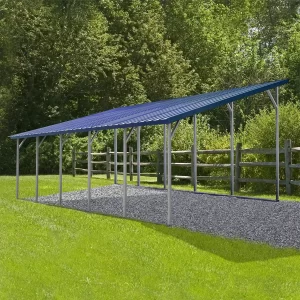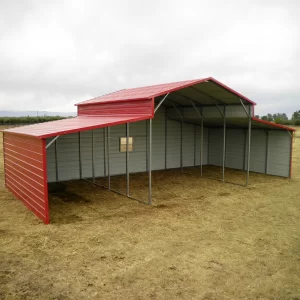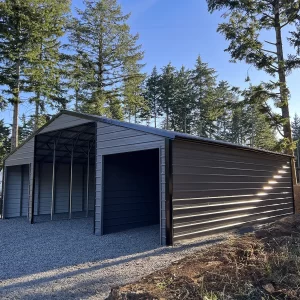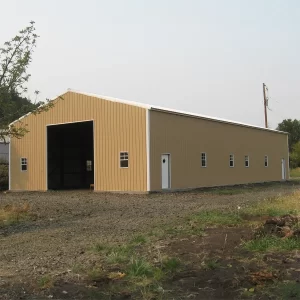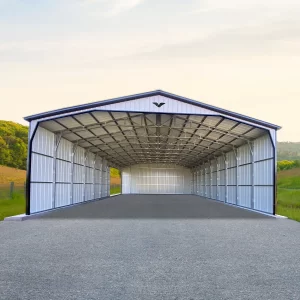Oregon Metal Buildings
Pre-Designed Metal Building Prices In Oregon
* All products include free delivery and professional installation in Oregon.
Try Our 3D Building Designer
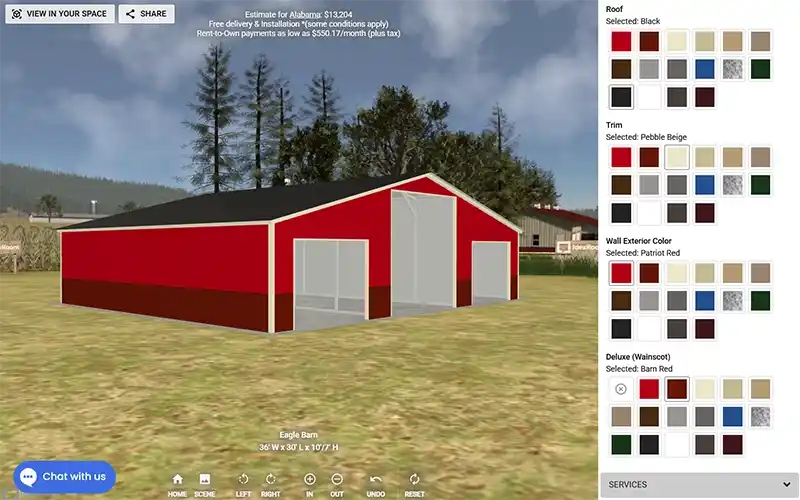
Oregon Weather & Its Impact on Metal Buildings
Wind Concerns in Oregon
Why it matters:
Oregon experiences varying wind conditions depending on the region, but areas along the coastal region and Cascades are subject to strong winds.
Key concerns:
- Coastal areas (like Portland, Astoria, and Eugene) often experience high winds due to Pacific weather systems.
- Mountain passes and valleys can funnel wind, resulting in stronger gusts.
- Wind ratings typically range from 90 mph in rural areas to 115+ mph in exposed locations along the coast or mountainous areas.
What to do:
- Offer wind-rated metal buildings that can handle 115+ mph for coastal or mountainous regions.
- For inland and southern areas, a 90–100 mph wind rating is usually sufficient.
- Ensure that anchors and foundation systems are strong and designed for specific wind load zones.
- Vertical roof styles can improve wind resistance by reducing wind drag.
Snow Concerns in Oregon
Why it matters:
Oregon has significant snowfall in certain areas, particularly in the mountainous regions and higher elevations.
Key concerns:
- Western Oregon (e.g., Portland) sees relatively mild snowfall (about 5–10 inches annually), but some snow may accumulate on buildings during winter.
- Eastern and higher elevations of the state, particularly in areas like the Cascade Range, experience heavier snow (up to 50 inches or more annually).
- Snow load ratings are particularly important in northern and eastern Oregon.
What to do:
- Standard snow load for much of Oregon is 10–20 psf (pounds per square foot).
- For mountainous regions, ensure snow loads are rated for 30–40 psf or higher.
- Recommend steeper roof pitches and vertical roofs for better snow shedding, especially in areas with heavy snowfall.
General Considerations
Permits and Codes:
- Always check with local building codes for wind and snow load requirements, as they can vary by county and city.
- Coastal Oregon often has stricter wind requirements and seismic zone regulations due to the potential for earthquakes.
What to do:
- Offer certified structures designed to meet Oregon state and local codes.
- Ensure that your metal buildings have engineered plans for areas with higher wind and snow loads.
Summary of Recommendations for Oregon:
Concern Recommendation
Wind Speed: Offer wind ratings of 90–115+ mph, higher for coastal areas
Snow Load: Standard 10–20 psf in western Oregon, 30–40 psf for mountainous regions
Roof Style: Recommend steeper roof pitches for snow shedding
Anchoring: Ensure proper anchoring systems for all areas, especially coastal and mountain regions
Permits/Codes: Verify local building codes for wind, snow, and seismic regulations

